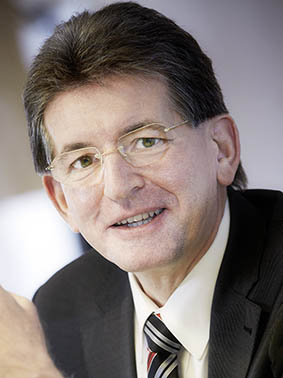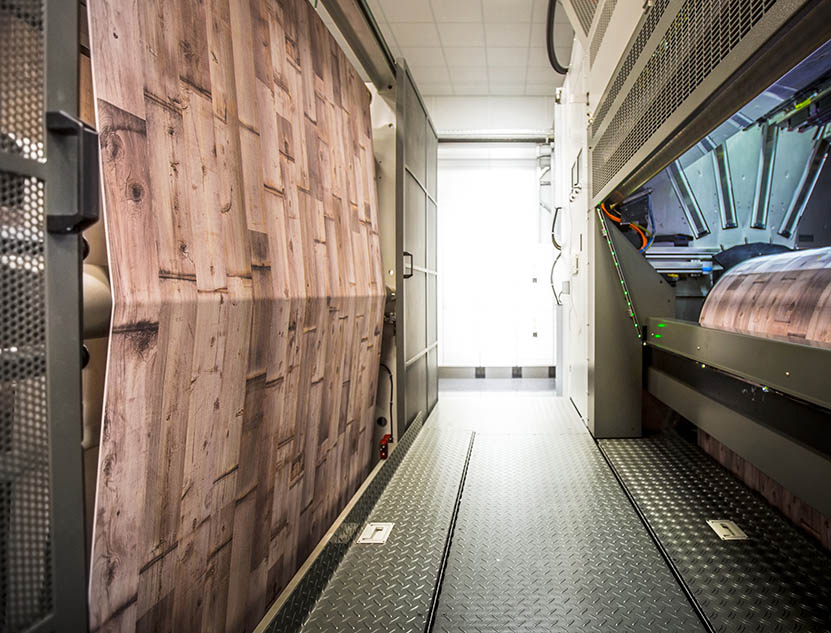GERMANY – Interprint put the world’s first industrial digital printing machine into operation in May 2015.

The single-pass inkjet printing system designed and constructed in co-operation with Koenig & Bauer has a maximum printing width of 1,680 millimeters and a printing speed of up to 150 meters per minute. A data transfer speed of 2.2 terabytes/second ensures the continuous data flow and its design allows for traditional substrates to be used for printing.
The following Q&A with Holger Dzeia, Managing Director of Interprint, details the development and experience to date.
Mr. Dzeia, how did the co-operation in the Interprint digital printing machine with the Koenig & Bauer Group come about?
Interprint is a pioneer in digital printing and has been intensively working on the development of industrial digital printing in the decorative paper segment since 2004. The profound and extensive know-how acquired during this period led us to this manufacturer, with whom we have developed this new printing machine through joint effort and high competence on both sides.
Were there any other development partners?
For all in-house developments, we try to involve the best experts and specialists of the respective departments in our teams and to make our R&D department effective and powerful.
What was the greatest challenge?
To develop a digital printing process in which we can use our traditional substrates (paper, ink, etc.) without having to make any process changes in the further processing of the products at our customers. Our customers must have an interest in problem solutions tailored exactly to their requirements. Which production method we employ to achieve the desired goals is of minor importance.

The printing machine is in the start-up phase during which both existing décors and new developments are digitally printed for our customers.
Can a digitally printed motif correspond 100% to an intaglio printed one?
Décors that can be produced with both methods are checked for feasibility on a case-by-case basis. According to our experience to date, the processes are compatible in a large number of cases. Mother-of-pearl / metallic décors and products with white pigments cannot currently be printed digitally for system-technical reasons.
Do you expect the digital printing machine to run to full capacity in the foreseeable future?
The large number of enquiries and specific orders from our customers to date make us optimistic that we will be able to use the worldwide first digital production machine in our industry to full capacity in multi-shift operation in future.




0 Comments